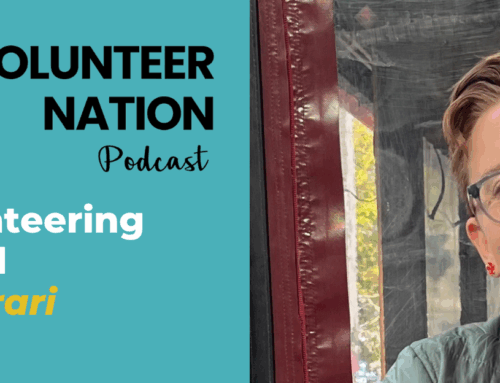 Volunteer Orientation Tips: What You Need to Know
Volunteer Orientation Tips: What You Need to Know
I once wrote about how human involvement is propelled by organizational socialization. In volunteer programs, we often attempt to institutionalize socialization by creating a single volunteer orientation event that’s meant to, among other things, shorten the time it takes to get acclimated. But, does this really work?
Socialization is “a continuing process whereby an individual acquires a personal identity and learns the norms, values, behavior, and social skills appropriate to his or her social position.” In the human resources world, socialization is synonymous with the terms assimilation, transition, alignment, induction, integration, on-boarding, and orientation — all related to helping new hires get comfortable.
Socialization is inherently slow — It can take over a year for full-time employees. So, is it realistic to believe we can rush part-time volunteers through the process? By the same token, do we really have the luxury of time when we welcome new volunteers onboard? Unless new recruits are making a contribution pretty early in their involvement, they are likely to lose interest and leave. So, what to do?
Rapid Volunteer Orientation
The first thing to accept is that orientation does not occur overnight. Also, it doesn’t happen solely because a volunteer participated in a group welcome session or watched an online recording of your PowerPoint slides.
New volunteer orientation is not an event. Rather, it involves a process of adaptation where volunteers experience a wide range of emotions internally — surprise, fear, ambiguity, etc. — while they wrestle with past and current expectations and make sense of their new environment. So, we must support them accordingly.
So, what helps keep this process moving? Orientation training can certainly help. Especially if it is helpful, supportive, make social cues easy to read, and fosters connections between newcomers, the organization, and the people in it. There are also specific, evidence-based tactics you can put to use.
Six Ways to Socialize
Researchers have identified six distinct socialization tactics that help newcomers adapt more rapidly. These have been widely adopted by human resources professionals and may be helpful to you. Below is a description of each and my thoughts for volunteer programs.
- Collective-individual – Subject newcomers to common entry experiences with a group versus unique experiences in isolation from other new hires.
- Implication: This is a strike against designing individual online learning experiences. Moreover, because volunteers need to be able to bond with others, it may be more helpful to schedule orientations at regular intervals when a critical mass is ready versus doing them one-by-one.
- Formal-informal – Use specifically designed activities and materials while segregating newcomers from incumbents versus no exclusively prepared materials and immediate mixing with incumbents (e.g., learning on the job).
- Implication: Throwing folks in to “sink or swim” isn’t helpful, nor are orientations that are conducted verbally without backup materials.
- Sequential-random – Communicate the sequence of discrete and progressive learning activities versus ambiguous or unknown sequence.
- Implication: During the screening process, volunteers can benefit from an explicit training plan that lays out what will happen and by when.
- Fixed-variable – Communicate specific time frame of completing each socialization step versus no given time frame.
- Implication: Although “work at your own pace” orientations may seem tempting and responsive to volunteer needs, it may be more helpful to set up achievable deadlines for each step.
- Serial-disjunctive – Provide newcomers with access to experienced organizational members as role models or mentors versus no access to experienced models.
- Implication: Buddy systems really work, and research shows that they are actually more helpful when the buddy is there to answer mundane everyday questions (like “where do I find the copy paper?”) versus to conduct technical training on how to do assigned tasks.
- Investiture-divestiture – Provide newcomers with positive social support and affirm their personal characteristics versus provide more negative social feedback until newcomers adapt.
- Implication: Volunteer recognition shouldn’t be reserved for volunteers who’ve been around a while or relegated to your annual recognition event; plan to build it into your orientation activities right from the start.
Is Orientation Better Online or On Land?
With more and more volunteer programs moving toward adopting E-Learning strategies, it also makes sense to take a look at whether it hurts or helps. In one study, a group of new employees (261 individuals) participated in either a group social-based orientation session or an individual computer-based session. They were then asked to complete a survey measuring the six content areas of organizational socialization (organizational goals and values, history, politics, language, people and performance proficiency).
Compared with employees who attended the social-based orientation session, those who were in the computer-based session reported lower levels of socialization in the content areas of people, politics and organizational goals and values, and no significant differences on the more information-based dimensions of history, language and performance proficiency.
- Implication: Although it may not always be feasible, it appears that face-to-face training is more effective in helping volunteers identify with the organization and its people. In terms of specific job tasks, online training may work well (BIG caveat: if it is designed well).
A New Approach: Integrated Volunteer Orientation
Socialization occurs on a continuum and is commonly thought to occur in three phases — before, during and after the official orientation training. To help volunteers get up to speed more quickly, try to integrate orientation information — and opportunities for interaction with other volunteers and staff — into the recruitment, screening, training, and placement stages of the relationship with your volunteers. This will help solidify their connection with your organization and increase your chances of developing a mutually satisfactory partnership.
Do you have any volunteer orientation tips you would like to share? Post them in the comments!







Leave A Comment